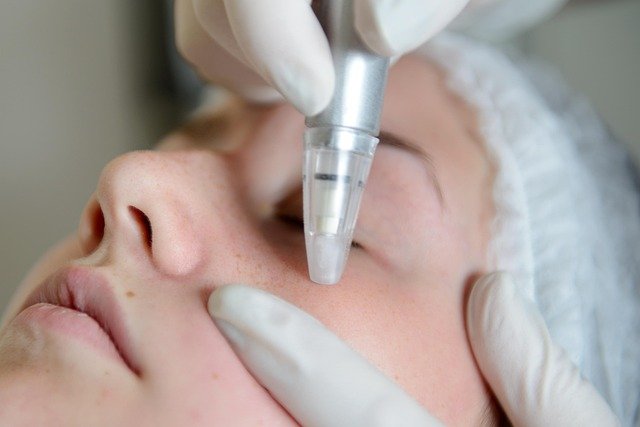Restore Your Radiance: Complete Skin Rejuvenation Guide
Discover how modern skin rejuvenation can refresh your complexion and tackle common concerns like fine lines, uneven texture, sun damage, and scarring. This comprehensive guide explains popular treatments—from fractional lasers and IPL to chemical peels—preparation tips, what to expect, and typical costs to help you choose the right option for healthier, more radiant skin.

Skin rejuvenation offers a wide range of approaches to revive tired or aging skin, combining advanced technologies with targeted skincare practices. Whether you want to soften fine lines, even out pigmentation, or reduce scarring, a tailored plan can help restore a brighter, smoother complexion.
Which skin concerns respond well to rejuvenation?
Rejuvenation procedures can address many common issues, including:
- Fine lines and wrinkles
- Uneven tone and rough texture
- Sun damage and age spots
- Acne scars and other visible scarring
- Enlarged or clogged pores
- Dull, fatigued-looking skin
The best choice of treatment depends on your skin type, the severity of the concern, and whether you want minimal downtime or more dramatic results.
Popular laser and light-based treatments
Laser and light therapies are widely used because they target specific problems precisely and stimulate the skin’s natural repair mechanisms.
-
Fractional laser resurfacing: Creates microscopic columns of thermal injury to trigger collagen production and skin renewal, improving texture and fine lines.
-
Intense Pulsed Light (IPL): A non-ablative, broad-spectrum light therapy that reduces pigmentation irregularities and promotes a more even skin tone.
-
CO2 laser resurfacing: An ablative laser that removes damaged outer layers, producing significant improvement in deep wrinkles and sun-damaged skin—typically with longer recovery.
-
Erbium laser resurfacing: Less aggressive than CO2, this option works well for superficial lines and offers a quicker recovery while still resurfacing the skin.
-
Nd:YAG laser: Particularly effective for vascular lesions and certain pigmentation issues; also used to enhance skin texture and firmness.
Each device and protocol has specific strengths and trade-offs; consult a licensed clinician to determine which aligns with your goals.
Preparing for a rejuvenation treatment
Proper preparation improves outcomes and reduces complication risk. Consider these steps:
- Schedule a consultation with a qualified dermatologist, plastic surgeon, or licensed aesthetic provider to assess your skin and set realistic expectations.
- Avoid tanning and limit sun exposure for at least two weeks before treatment.
- Stop using strong topical agents, such as retinoids, chemical exfoliants, or bleaching agents, when instructed by your provider.
- Share a complete medication list and medical history, including any history of cold sores, which may require preventive antiviral medication.
- Hydrate, eat well, and follow any pre-treatment directions given by your clinician (e.g., cleansing protocols or topical numbing application).
What to expect during and after the procedure
Procedures vary in sensation and length. Many treatments are brief—minutes to an hour—while more intensive resurfacing can take longer. Topical anesthetics, cooling devices, or local anesthesia are often used to minimize discomfort.
Immediately after treatment you may notice:
- Redness and swelling that typically subside in days to a week, depending on intensity
- Mild peeling, flaking, or crusting after ablative procedures
- Heightened sensitivity to sunlight and the need for rigorous sun protection
Results commonly emerge gradually as collagen remodels and the skin heals—often improving over weeks to months. Follow your practitioner’s aftercare plan carefully: apply recommended moisturizers, avoid sun exposure, and use broad-spectrum sunscreen. Refrain from strenuous exercise and avoid picking at peeling skin.
Typical costs and what to expect financially
Below is a general pricing overview for common rejuvenation procedures. Actual fees vary by provider, location, and treatment complexity. Multiple sessions may be required for best results, and many clinics offer package discounts.
| Treatment | Provider Type | Cost Estimation |
|---|---|---|
| Fractional Laser Resurfacing | Dermatologist or Plastic Surgeon | $1,000 - $5,000 per session |
| IPL Therapy | Medical Spa or Dermatologist | $300 - $600 per session |
| Chemical Peel | Aesthetician or Dermatologist | $150 - $600 per session |
| Microdermabrasion | Medical Spa or Dermatologist | $75 - $200 per session |
| Radiofrequency Treatment | Medical Spa or Dermatologist | $300 - $800 per session |
Prices, rates, or cost estimates mentioned in this article are based on the latest available information but may change over time. Independent research is advised before making financial decisions.
Choosing the right plan and final considerations
When deciding on a rejuvenation route, balance your goals against downtime tolerance and budget. Non-ablative options like IPL or certain lasers often require multiple treatments but offer quicker recovery. Ablative procedures deliver more dramatic results in fewer sessions but involve longer healing.
Ask your provider about:
- Candidacy based on your skin type and medical history
- Expected number of sessions and maintenance schedule
- Pre- and post-treatment care routines
- Risks, possible side effects, and signs to report during recovery
Combining in-office procedures with a consistent home skincare regimen—SPF, antioxidants, and medically recommended actives—can extend and enhance results.
Skin rejuvenation can renew your complexion and boost confidence when selected and performed thoughtfully. Work with a licensed professional to build a customized, safe plan that matches your needs and lifestyle.
This article is for informational purposes only and should not be considered medical advice. Please consult a qualified healthcare professional for personalized guidance and treatment.






